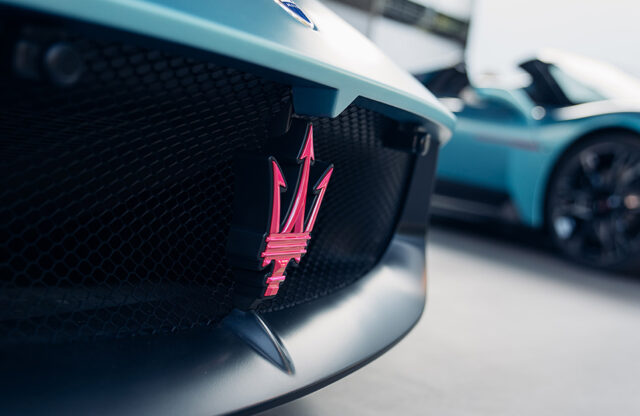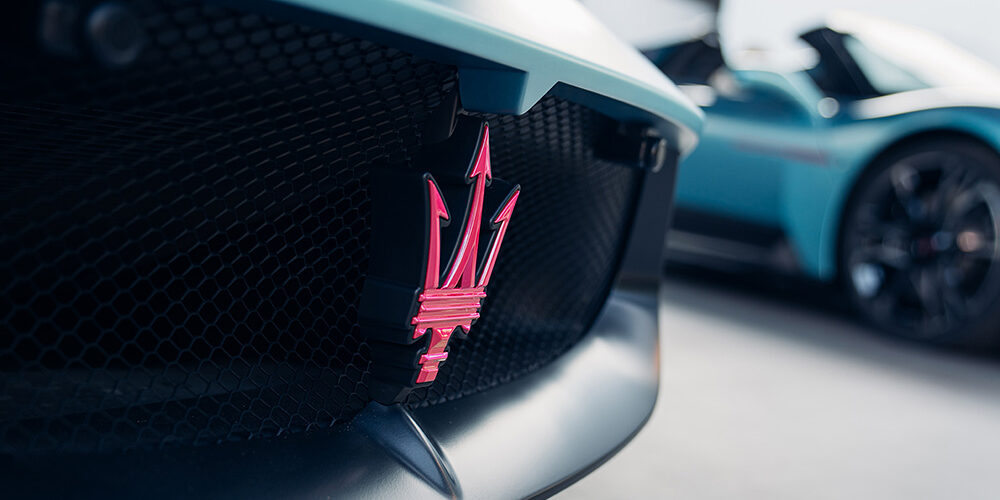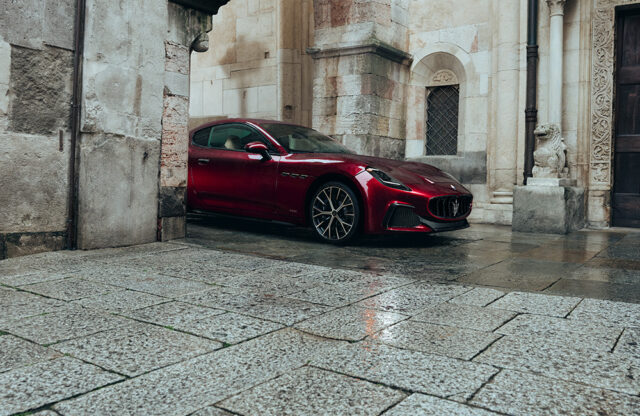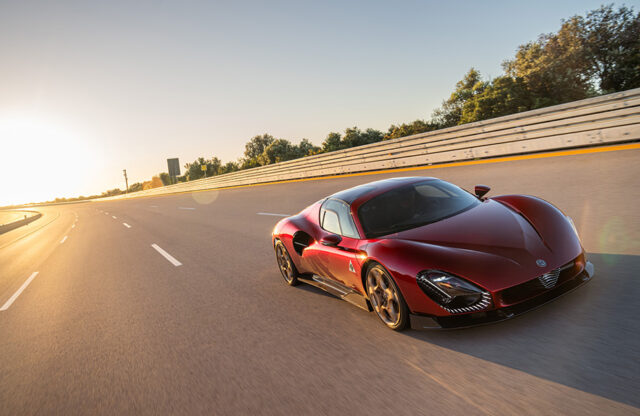A lot of current news about Maserati seems to be doom and gloom, yet when Magneto recently spoke with Klaus Busse, the marque’s head of design, there was only positivity – tempered by a spot of reflection on the company’s current design language.
“We are in a very important period for Maserati; we are reflecting on a generation of beautifully sculpted cars,” Busse says, just as the company’s latest creation, the MCPura, was revealed at the Goodwood Festival of Speed 2025. “If you look at Maserati’s history, the brand has reinvented itself every ten to 20 years. There were the fuselage-style cars of the 1950s, such as the 3500 GT. Then came the dandy-style Ghibli in the 1960s, followed by the wedge-shaped cars of the 1970s. The 1980s and 1990s brought a more pragmatic brutalist approach with models such as the Shamal and Biturbo. After that, there was a more romantic period with the 3200 GT. Now, we are in an era of beautifully sculpted design once again. It’s like Queen albums – each one is a certain period of the band.”

Rather than see it as a negative, he views such shifting design epochs as one of the strengths of Italian design – and not just for Maserati. “We have this mental freedom granted to us by those who worked before us, allowing us to create not just because someone wakes up in the morning and says, right, let’s try something completely different,” Klaus says. “When you moved from the fuselage design of the 1950s to the flatter body sides of the 1960s, it was because side glass became curved and could blend into the body, removing the need for a shoulder. The engine layout also shifted from front to rear, and Giorgetto Giugiaro, who designed the Bora, said this was the moment to combine it with new design thinking.”
Klaus says Maserati was the first to create a production mid-engined wedge-shaped car. “Ferrari was not mid-engined at the time. Lamborghini had the Miura, but it still followed a classic design language. So the Bora, perhaps along with the Pantera, were the first cars to truly embrace a new layout with a new design philosophy,” he says.
“Then came the 1980s, when once again technology changed. Cars had plastic facias and became more compact, largely as a response to the oil crisis. Cars were more pragmatic. Then came a return to softer shapes, as ownership changed at Maserati after the Biturbo period, and they brought back Giugiaro. These moments are rare, and only happen every ten or 20 years.”
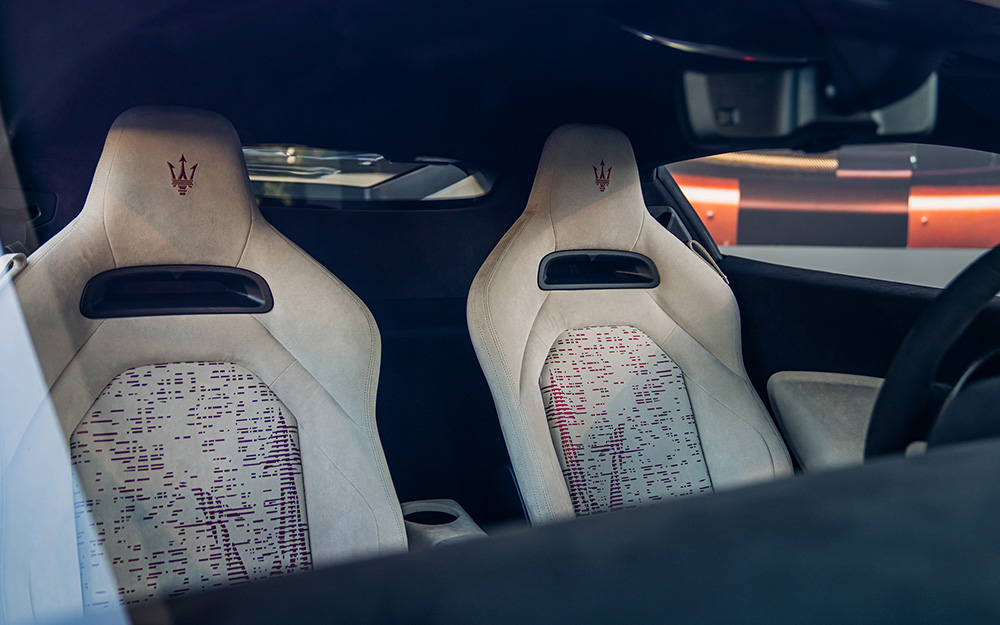
But what of the future? 3D printing, virtual design and AI have revolutionised how cars are designed – yet Klaus sees this as a natural progression. “One of our design pillars is that science creates art. This idea did not come from a glass of red wine – it was inspired by the fact that, arguably, the most important period in Italian history was the Renaissance, with figures such as Michelangelo and Leonardo da Vinci,” he says. “I admire da Vinci because it is never quite clear whether he was creating art for its own sake or if it was simply the by-product of his scientific exploration. That is where this aspect of our design DNA began.”
Klaus believes the concept of science creating art can be expressed in many ways – and he points to the MCPura’s seat fabrics (pictured above) as an example. “This is a laser-cut pattern – Maserati is the only one in the automotive world doing this, because I wanted to go beyond materials such as metal, carbonfibre and wood,” he says. “I wanted to push beyond simply seeing someone hand-stitching a steering wheel.”
Klaus is very clear that human craftsmanship remains extremely important, because the MCPura is essentially hand-built. “But I also wanted to push boundaries. I wanted to use cutting-edge technology to create something new, because I believe that is what people expect of us. So we use this laser pattern, we glue a secondary fabric behind it, and the result is a truly striking design,” he adds. “We use laser technology, but we combine it with Italian creativity to make something unique.”
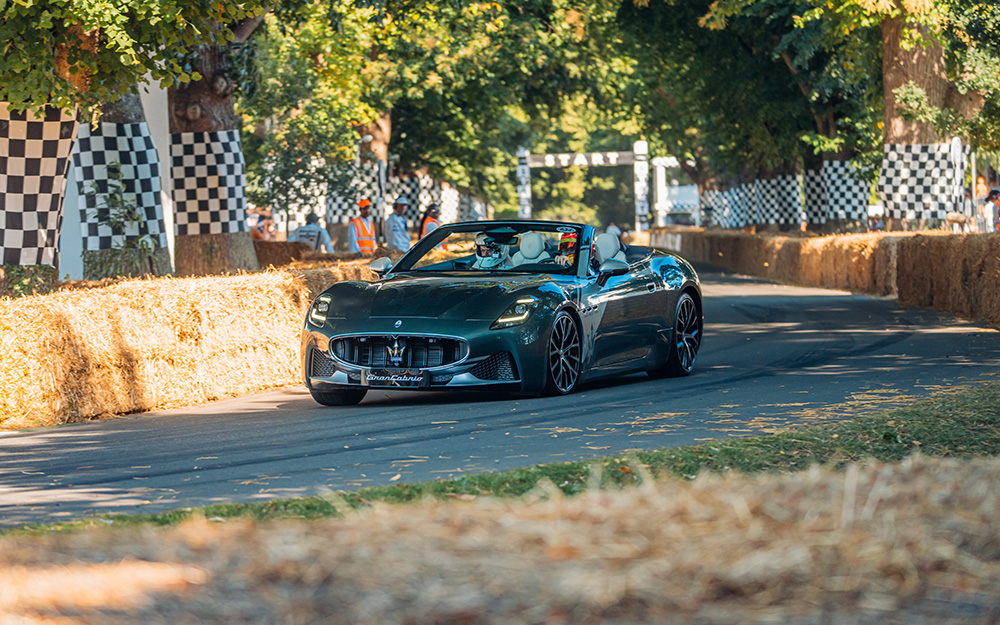
The obvious question is where Maserati design is heading next – but Klaus is keeping understandably schtum, although he does drop hints, pointing to three elements that have influenced Maserati’s approach in the past. “One of them is technology,” he says. “Humble things such as a facias, glass or packaging. If you look at what happens when a company goes electric, you suddenly have all the freedom you want again in terms of packaging. Not every company uses that freedom, but we have.”
Klaus points to rivals placing all the batteries in one flat section under the seats; while he understands the concept from an efficiency viewpoint, there are drawbacks. “The seat then goes up, the car goes up, and the centre of gravity ends up underneath you rather than inside the car,” he says. “What Maserati’s engineers have done is remove the engine, gearbox and driveshaft from the GranTurismo and replace that space with batteries. They are like big chocolate bars, and you can place them wherever you want.”
He explains that this manifested two benefits. “First, you do not interfere with the profile of the car, because the seat stays low,” he says. “The car did rise a little, because the batteries are heavy, so we had to add a bit more tyre on the wheel to avoid damaging it on speed bumps. But that was only around five or ten millimetres, and not due to styling reasons, just because of the batteries.”
The other benefit was equally important for Klaus – keeping the batteries ‘inside’ the car. “This means the centre of gravity remains ‘inside’ the car as well, which is brilliant for handling,” he says.
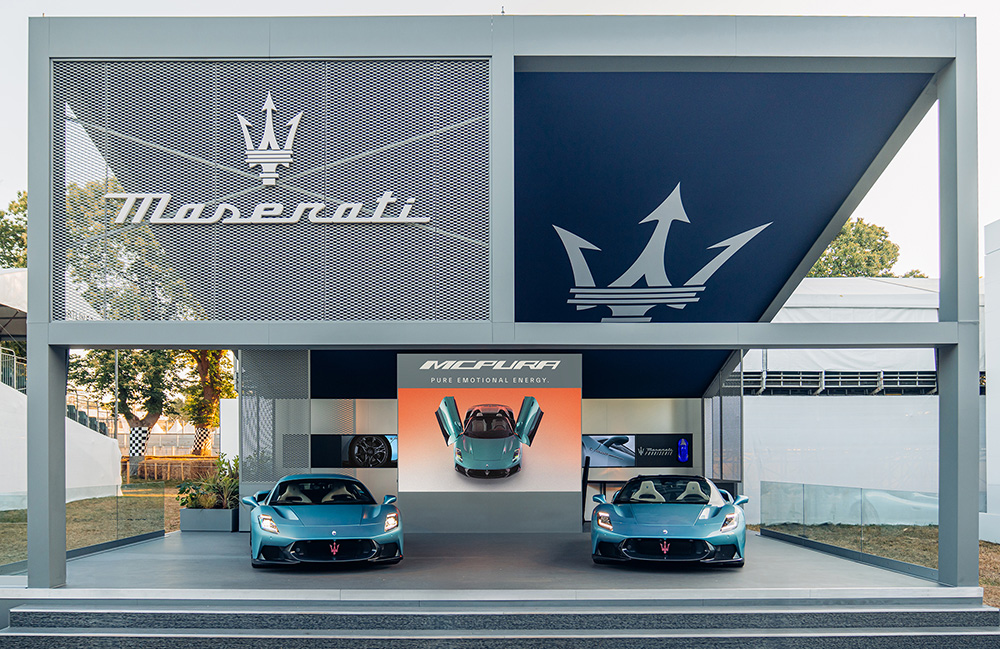
Another factor influencing Klaus’s design thinking is the wider cultural context of society’s approach to cars – and supercars in general. “These cars were designed this way because I always wanted to create something that would not be offensive but would bring people together,” he says. “We collaborated with the Italian Pavilion at the World Expo in Dubai. The motto we had was ‘beauty connects people’. I believe that is Maserati’s role as Italians, because Italy is one of the most powerful brands in the world. No matter where I go, when I tell people I live in Italy, they smile.”
He continues: “It is the only country I can think of where no one has any reservations about someone being from there. So our job through this work is to bring people together, allowing them to admire something beautiful. I can drive through a German city, a French city or any city where society is having a very heated debate about the role of the supercar, and get a thumbs-up.”
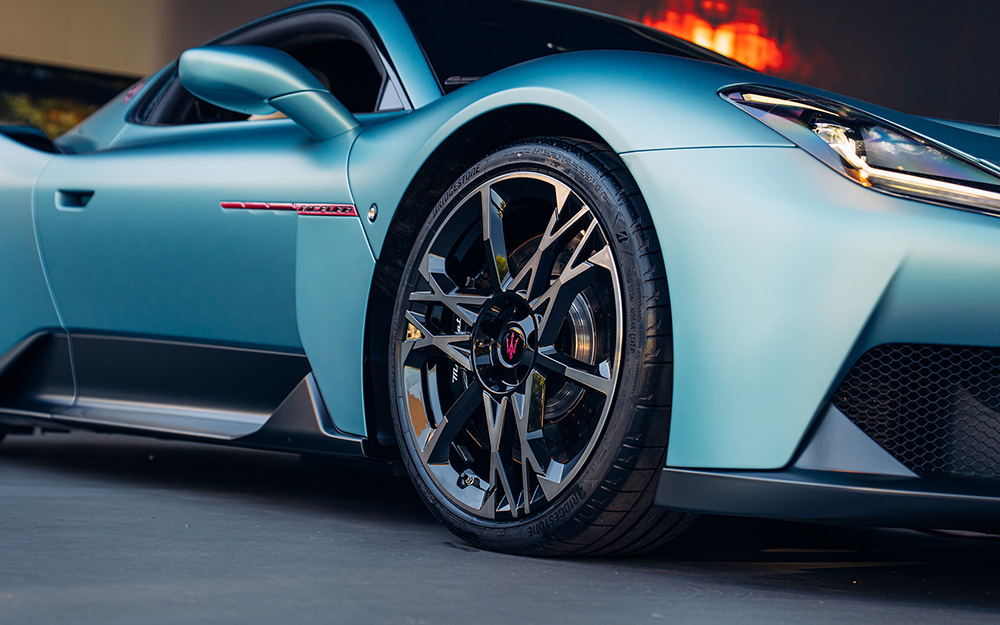
The third factor is the nature of the design tools themselves, he says. “You had the drafting tools that created the fuselage of the 1940s and 1950s, then you had the typical Gandini and Giugiaro paper side views of the 1970s, maybe still the 1980s,” Klaus reflects. “Then came the influx of vellum paper technology from the US, and suddenly you saw softer shapes such as the 3200 GT. Then we had Photoshop and now many designers do not even sketch anymore – they go straight into Blender or into 3D surfacing… and now you have AI.”
While Klaus says that AI is part of the toolkit, it actually has less of an influence than is hyped up. “It’s not really a super-creative tool because AI at the moment is a mirror of what is already out there,” he says. “It is not really evolving anything, it is just reflecting what it sees. So you can use it for a few things but not for the main part. Society is changing and technologies are changing. If you move to batteries, in that case technology will shift. And with AI, maybe creativity will change as well.”

Reflecting more broadly on car design as a whole, he’s observing a move towards more dramatic proportions and monolithic designs from British brands – not only with the new and controversial Jaguar, but also with the Bentley EXP15 revealed on the eve of the Goodwood Festival of Speed.
“It is fascinating to see, because they all approach it slightly differently, but I think there is something there that will emerge,” he says. “In the 1960s and 1970s there were only a few design houses; today you’re competing with many different designers and design houses, especially with the influx of Chinese companies. It’s extremely difficult to create something new and meaningful, which is why I respect what my British colleagues are trying to do.”
He also has respect for the Tesla Cybertruck – but not because it’s beautiful. “But we’ll talk about it – and certainly, we did the same with the new Jaguar,” Klaus says. “I saw the Jaguar in person in Miami – I like to see cars with my own eyes before I comment on them. I think these cars are important because they stimulate us, they make us as designers have heated debates about where design should go. But design, as with music and film-making, all these creative fields have had so much work done already, and now with AI there is so much more coming in that it makes it difficult – so you really need to know who you are.
“The beautiful thing about Maserati is that the designers who came before us – Giugiaro, Ramaciotti, Gandini, all these amazing people – have created work that gives my team and I the freedom to create something fresh.”
For more information on Maserati, head here.
